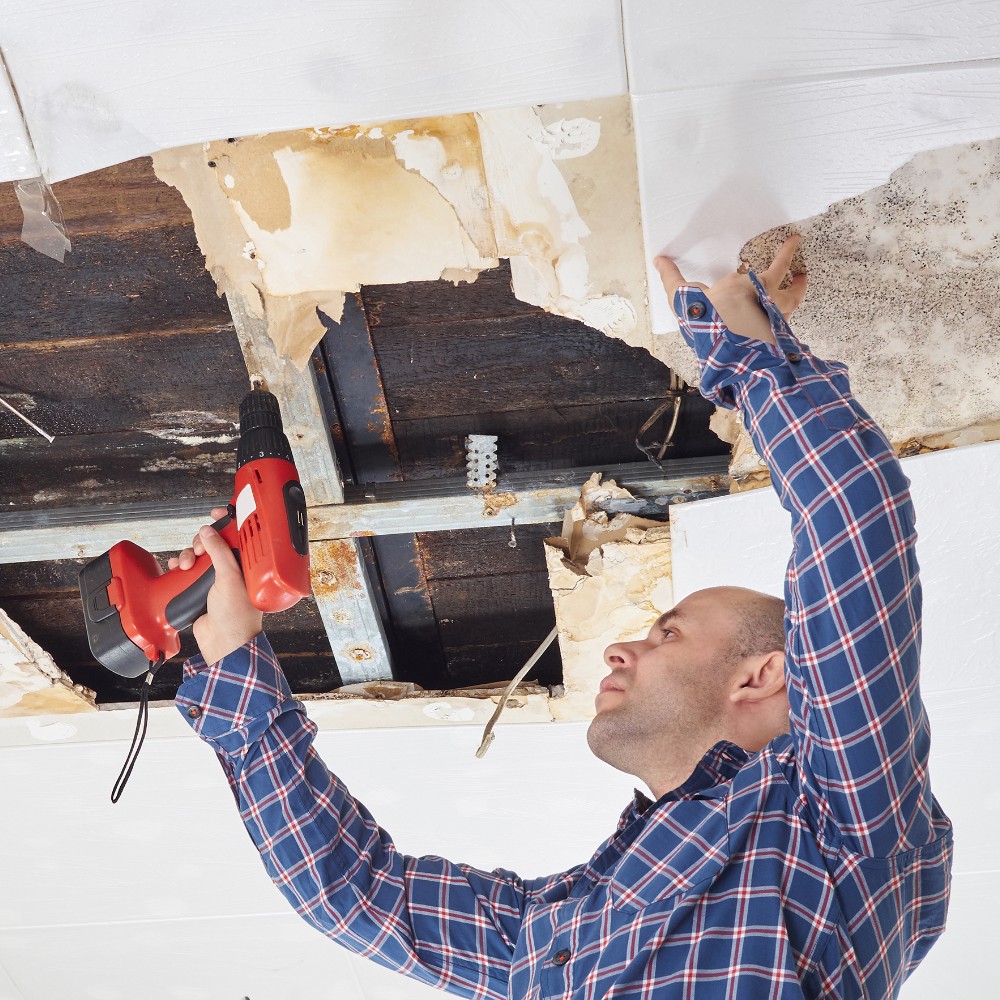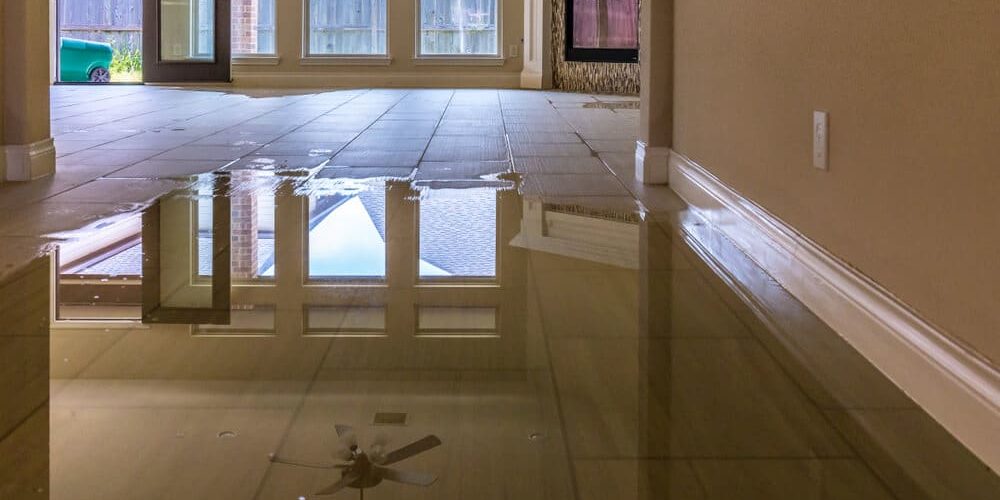Comprehensive Damage Restoration Services for All Types of Water Damage
Comprehensive Damage Restoration Services for All Types of Water Damage
Blog Article
The Process of Water Damages Clean-up: Ensuring Your Home Is Restored Successfully
Water damage can be a challenging obstacle for home owners, demanding a careful and organized cleanup procedure to restore safety and functionality. damage restoration services. Following this, efficient water removal techniques play a pivotal function in mitigating additional injury.
Examining the Damage
Upon discovering water damage, the initial step is to extensively examine the level of the impact. This initial evaluation is essential, as it aids determine the essential steps for reliable clean-up and remediation. Begin by examining the impacted areas, consisting of wall surfaces, ceilings, floors, and personal valuables, to recognize the resource of the water intrusion, whether from flooding, leakages, or condensation.
Documenting the damages is crucial for both insurance coverage cases and preparing reconstruction efforts - damage restoration services. Use photos and composed notes to capture the extent of the damages, noting any afflicted structural components and materials. Pay unique interest to areas that might not be right away noticeable, such as behind walls and under rugs, as hidden moisture can result in more complications, including mold and mildew development
In addition, analyze the timeline of the water exposure. Eventually, a detailed evaluation lays the foundation for an effective water damage cleaning process, making certain that all affected locations are attended to properly and thoroughly.
Water Extraction Strategies

Specialists normally employ submersible pumps for larger quantities of water, which can promptly minimize flooding in cellars or various other affected locations. For smaller sized amounts, wet/dry vacuums are usually used to draw out recurring wetness from carpetings and tough surfaces. Furthermore, using portable extractors permits for targeted elimination in constrained rooms or areas with delicate materials.
In circumstances of contaminated water, such as sewer or floodwater, advanced extraction techniques may involve the use of biohazard equipment to make sure security and compliance with health and wellness regulations. High-powered removal devices are vital in decreasing water retention in architectural materials, which can lead to mold growth and structural wear and tear if not resolved without delay.
Inevitably, the effectiveness of water extraction techniques plays a pivotal role in the overall success of the water damages cleaning procedure, laying the groundwork for subsequent restoration initiatives.
Drying and Dehumidification
When standing water has been properly drawn out, the next essential phase in the water damages cleaning process is drying and dehumidification. This step is necessary to prevent further damages and mold and mildew development, which can occur within 24 to 48 hours in damp atmospheres.
To achieve reliable drying, specialized equipment such as industrial-grade air moving companies and dehumidifiers is employed. Air movers distribute air throughout damp surface areas, improving dissipation rates, while dehumidifiers minimize humidity degrees airborne, advertising a conducive environment for drying out. The combination of these devices makes sure that moisture is drawn out from furnishings, floorings, and walls, allowing them to dry extensively.
It is necessary to keep track of the drying out procedure closely. Professionals often make use of moisture meters go to this web-site to analyze the wetness web content in different materials, making certain that all influenced areas reach appropriate dryness degrees. This thorough method assists to stop concealed moisture pockets that could cause architectural damages or harmful mold and mildew development.

Cleaning and Disinfecting
After the drying and dehumidification phase is full, the following essential step in water damages clean-up is cleaning up and sanitizing the impacted areas. This process is important to avoid the development of mold, bacteria, and other pathogens that thrive in damp atmospheres.
The cleaning stage typically involves eliminating any kind of debris, dirt, and pollutants from surfaces utilizing specialized cleansing representatives. For hard surfaces, a combination of soap and water or commercial cleansing items is typically employed. Soft products, such as furniture and carpets, might require more considerable cleansing techniques, consisting of steam cleansing or deep extraction techniques, to ensure complete sanitation.

Disinfecting follows cleansing, utilizing EPA-approved anti-bacterials to eliminate dangerous microorganisms. This action is crucial, specifically in locations that may have come into contact with floodwaters or sewer, as these sources can pose serious health risks.
Furthermore, it is very important to resolve any type of staying smells, which might need using odor neutralizers or innovative techniques like ozone treatment. Correct cleaning and sanitizing not only restore the security and hygiene of your home however also lay the foundation for effective reconstruction and repairs in subsequent stages of the water damages cleanup procedure.
Restoration and Repairs

Once the evaluation is full, remediation efforts can begin. This commonly entails repairing or replacing damaged materials, making sure that all job conforms with local building ordinance and criteria. For example, if Full Report drywall has actually been endangered, it will need to be eliminated and changed with brand-new material. Additionally, flooring might call for comparable interest, relying on the level of water exposure.
It is vital to involve skilled reconstruction specialists throughout this procedure, as they have the knowledge to manage complex repairs successfully. They can help alleviate potential future problems, such as mold and mildew development or structural instability, thus making sure a secure and habitable living atmosphere. Inevitably, reliable remediation and repairs bring back the home's stability and improve its total worth.
Conclusion
To conclude, the procedure of water damage clean-up is essential for restoring a home to its pre-damage condition. Each phase, from analyzing the damage to carrying out efficient water removal methods, followed by detailed drying, sanitizing, and needed repair work, plays a crucial duty in making certain safety and compliance with building criteria. Efficient execution of these actions not just reduces immediate damage however likewise enhances the long-lasting honesty and worth of the residential or commercial property.
Water damages can be an overwhelming obstacle for house owners, necessitating a precise and structured cleaning process to restore safety and security and performance. Ultimately, a thorough analysis lays the foundation for a successful water damage cleaning procedure, making certain that all impacted locations are addressed successfully and thoroughly.
Reliable water removal techniques are crucial in mitigating damage and preventing more problems following a water breach occasion.In conclusion, the process of water damage clean-up is vital for recovering a home to its pre-damage condition. Each stage, from assessing the damages to applying effective water extraction techniques, complied with by detailed drying, sterilizing, and needed repairs, plays a necessary duty in making certain safety and security and conformity with structure criteria.
Report this page